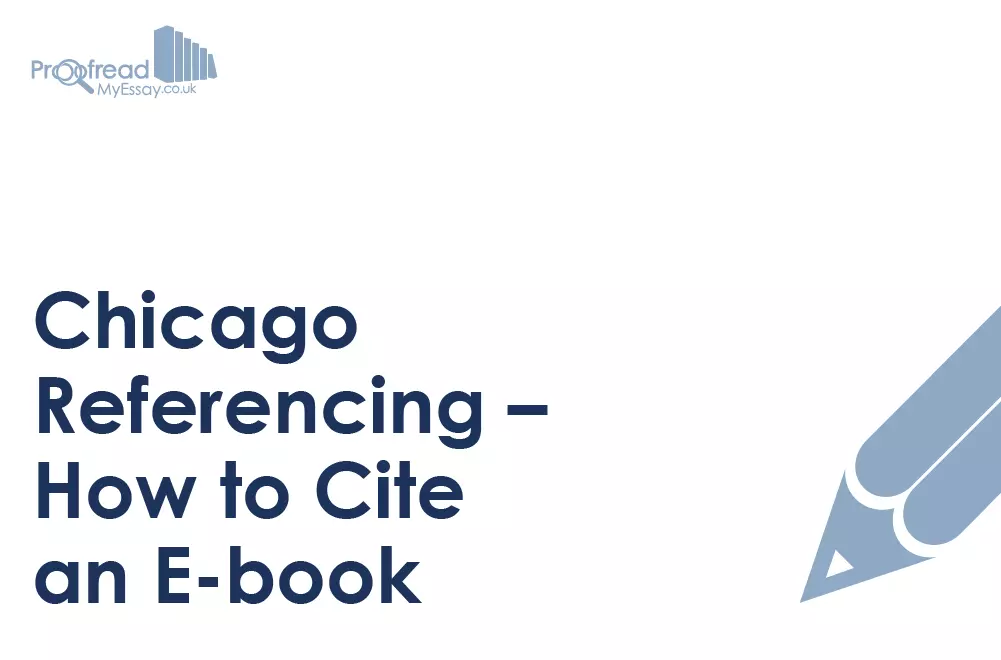One day, there’s a chance paper books will be relics owned only by hipsters and the technologically backward. But the book as a format will live on in electronic form, so knowing how to cite an ebook is vital for the modern academic. In today’s blog post, we explain how to achieve this using both versions of the Chicago referencing system.

Citing an Ebook: Author–Date Citations
One version of Chicago referencing uses author–date citations, in which the author’s surname and year of publication are given in parentheses. If quoting the source directly, include page numbers:
The internet poses ‘major challenges’ to libraries (Smith 2007, 25).
If no page numbers are available in the ebook being cited, you can use chapter, section or paragraph numbers instead:
Reading is ‘changing at a huge rate’ (Stevens, 2015, chap. 4, para. 6).
Make sure to add all cited sources to the reference list. The information required here for ebooks is the same as for print books, but with an additional URL or publication format:
Author Surname, First Name. Year of Publication. Title. City of Publication: Publisher. Format/URL.
For instance, we could list an ebook as follows:
Smith, Ryan. 2007. Reading Online. Glasgow: MacGyver Publishing. Kindle.
For online sources, check your style guide as to whether you need to give a date of access in the reference list.
Citing an Ebook: Notes and Bibliography Style
The second approach recommended by Chicago referencing uses a notes and bibliography system, where footnote citations are indicated using superscript numbers (e.g. 1, 2, 3).
Find this useful?
Subscribe to our newsletter and get writing tips from our editors straight to your inbox.
You should provide full publication information for all sources here. For the first footnote reference of an ebook, you need to set out:
n. Author Name, Title (City of Publication: Publisher, Year), Format/URL, Pinpoint Reference.
If you are citing an ebook found online, you may also need to give a date of access (please check your style guide). For instance:
1. Bruce Stevens, Literary Evolution: How Books are Changing (London: Bruce Ltd, 2015), accessed June 25, 2016, http://www.ebooklibrary.com/stevens, p. 45.
As above, if an ebook doesn’t have page numbers, you can use a chapter, section or paragraph number for the pinpoint reference.
For repeat references of the same source, you only need to give the author’s surname, a shortened title and a pinpoint reference (if relevant) in footnotes:
2. Stevens, Literary Evolution, 112.
In the bibliography, the information required for an ebook is similar to the first footnote, but with different punctuation and the first listed author’s names reversed. For example, we could list an ebook as follows:
Stevens, Bruce. Literary Evolution: How Books are Changing. London: Bruce Ltd, 2015. Accessed June 25, 2016. http://www.ebooklibrary.com/stevens.



